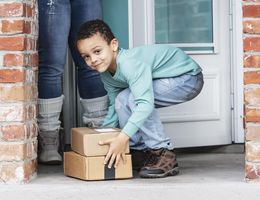Keep your meal kit safe

Aug. 7, 2023—Meal kits can make cooking at home easier. They can help you stay on budget, reduce waste and meet your health goals. But food handling and storage rules still apply. Don’t let convenience trump safety, especially in warm weather.
Food safety for meal kits
According to the Centers for Disease Control and Prevention and FoodSafety.gov, meal-kit safety starts before you order. To shop safely:
- Research the company. Make sure the food is packed properly, and find out what happens if delivery makes the food not safe to eat.
- Arrange for delivery. Try to make sure someone will be home when your food arrives. If that's not possible, find a space for delivery that keeps the food cool and safe from animals and pests.
Once your package arrives, act fast:
- Open it immediately. Examine each item, and make sure the packaging is intact. Pay attention to labels like "Keep refrigerated" or "Keep frozen."
- Do a temperature check. Use a food thermometer to make sure that perishable food arrived at a temperature of 40 degrees or lower. If the food is too warm, don't eat it. Instead, contact the company right away.
- Put perishable food away in the fridge or freezer as soon as you can. Don't let it thaw or marinate on your counter.
Pre-packaged ingredients can make preparing meals faster and easier. But it's still important to practice food safety as you cook and serve your meal. Remember to:
- Wash your hands with soap and water for at least 20 seconds before cooking and eating.
- Rinse fruits and vegetables under running water before handling, chopping or eating them.
- Keep raw meat, poultry, seafood and eggs away from other foods. Use separate cutting boards, utensils and plates for these foods.
- Use a food thermometer to make sure foods are cooked to a safe temperature. For fish or cuts of meat such as beef and lamb, that's 145 degrees. Ground meat should be cooked to 160 degrees. Cook chicken and other poultry to 165 degrees.
Not ready to cook your planned meal right away? Find out how long you can store food safely in your refrigerator or freezer.
Sources
- Centers for Disease Control and Prevention. "Food Delivery Safety." https://www.cdc.gov/foodsafety/communication/food-safety-meal-kits.html.
- Centers for Disease Control and Prevention. "Four Steps to Food Safety: Clean, Separate, Cook, Chill." https://www.cdc.gov/foodsafety/keep-food-safe.html.
- FoodSafety.gov. "Tips for Meal Kit and Food Delivery Safety." https://www.foodsafety.gov/blog/tips-meal-kit-and-food-delivery-safety.
- U.S. Food and Drug Administration. "Are You Storing Food Safely?" https://www.fda.gov/consumers/consumer-updates/are-you-storing-food-safely.
